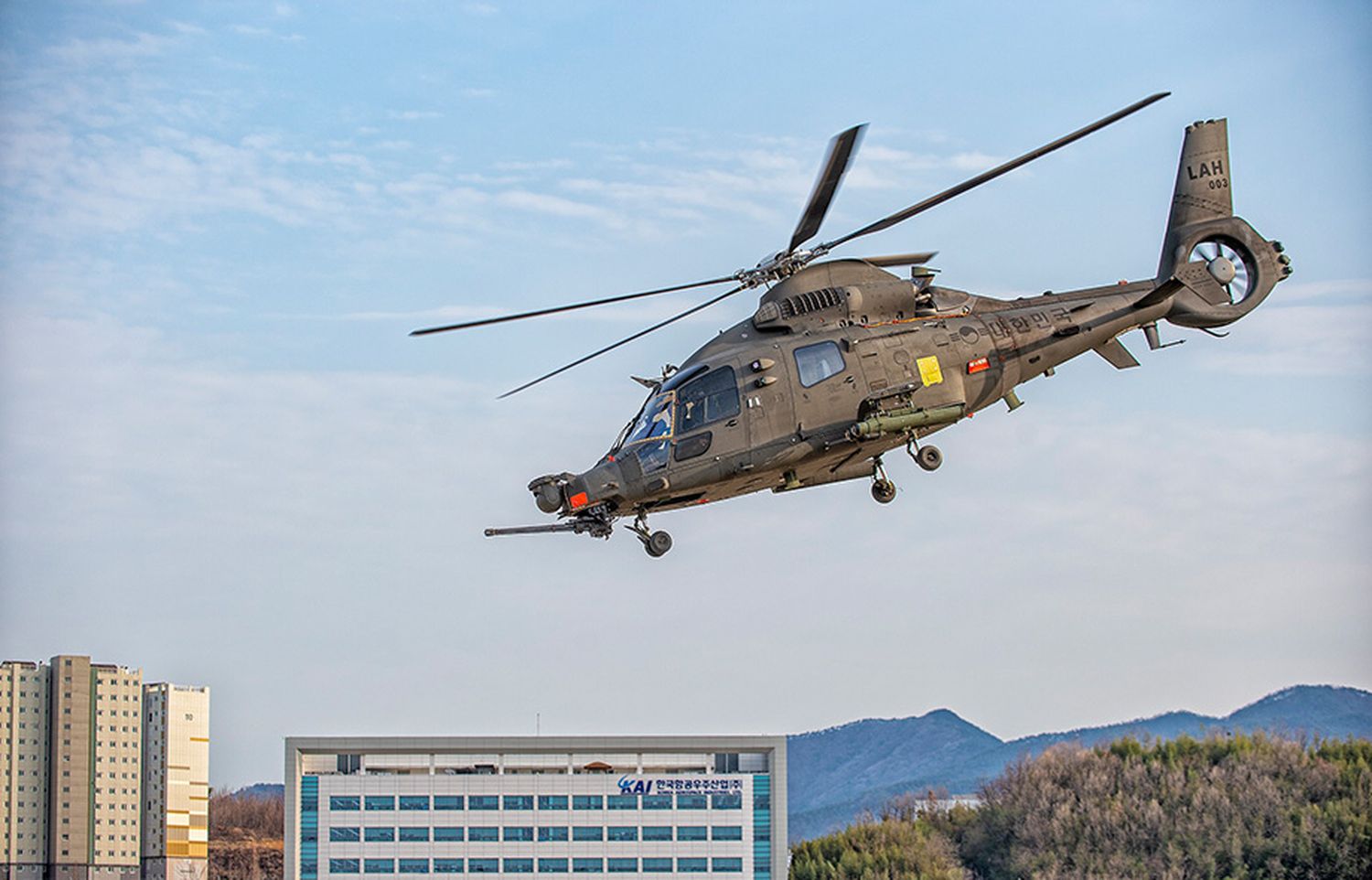Korea Aerospace Industries (KAI) and South Korea’s Defense Acquisition Program Administration signed the first serial production contract for the new light armed helicopter (LAH).
The contract cost is KRW 302 billion (about USD 235 million), and includes the integrated logistics support elements, 10 LAH helicopters and initial pilot and maintenance team training. The contract period of performance is approximately 36 months, with the first unit to be delivered in December 2024.
The LAH is intended to replace the Korean Army’s aging 500MD and AH-1S, currently in operation, in fire support missions for ground operations, armed reconnaissance, armed escort and anti-armor warfare.
The LAH had its «roll out» in December 2018. To save development time and money, it was decided to seek external assistance. The LAH (and its civilian version, the LCH) was developed with assistance from Airbus Helicopters from the H155, which is an evolution of the famous Dauphin.
Equipment
The LAH features a glass cockpit and state-of-the-art avionics, including an smart multifunction display (SMFD) and an integrated digital mapping computer (IDMC). The cockpit was designed to provide the highest situational awareness capability to its crew and optimize the human-machine interface (HMI).
The helicopter has a 4-axis automatic flight control system (AFCS) and is powered by two Arriel 2L2 turboshaft engines jointly developed and built by Safran Helicopter Engines and Hanwha Techwin for this project.
Weapon system
It is armed with a chin-mounted 20 mm gatling gun and uses a pair of short wings to carry 70 mm unguided rockets, as well as the Cheongeom anti-tank guided missile (ATGM), whose development was recently completed, with an approximate range of about 8 km.
In the nose, the LAH carries a high-performance optronic target acquisition system (TADS) and the gun is slaved to a helmet-mounted display (HMD) system, which significantly improves the gun’s aim.
It has a tactical data link developed by the Korean Army (KVMF) and also a Korean joint tactical data link (Link-K), allowing it to carry out its missions in a fully integrated manner with other Armed Forces assets, as well as interfacing with drones and future weapons developments.
Survivability
The aircraft’s survivability has been greatly enhanced by being equipped with state-of-the-art defense systems, such as the survivability equipment management computer (EWC), radar warning receiver (RWR) and missile warning receiver (MWR), which are means of warning and defending against threats from anti-aircraft weapon systems.
The ROK Army is expected to acquire about 210 units, which will be manufactured and delivered by Korea Aerospace Industruies (KAI) until 2031.



Comentarios
Para comentar, debés estar registrado
Por favor, iniciá sesión